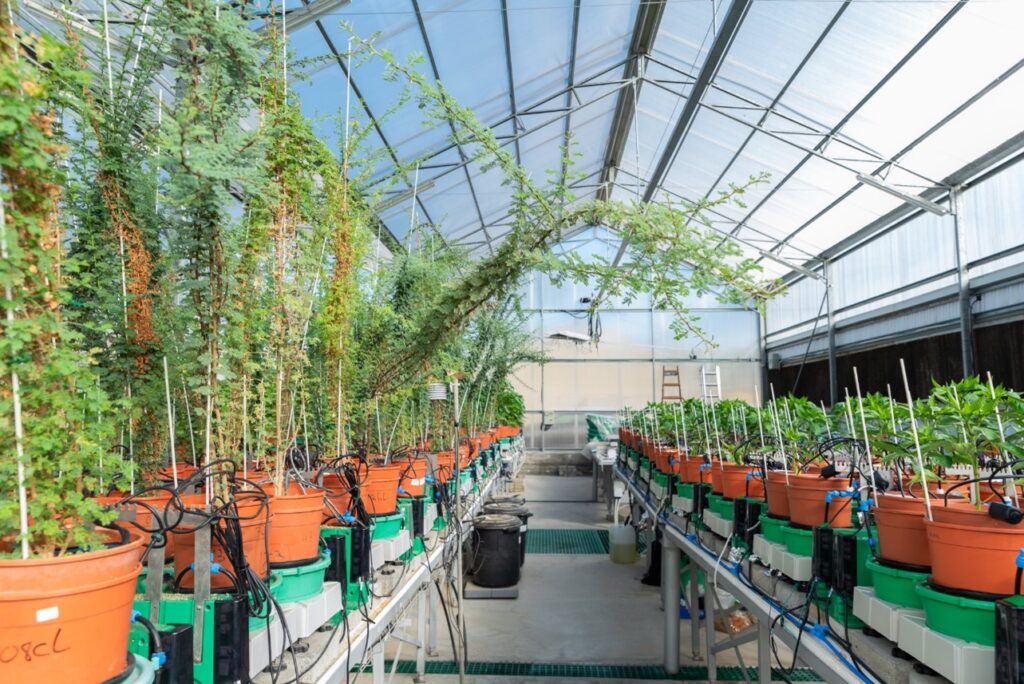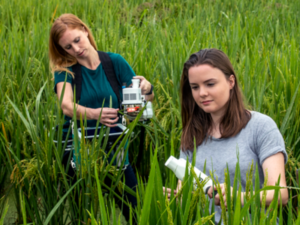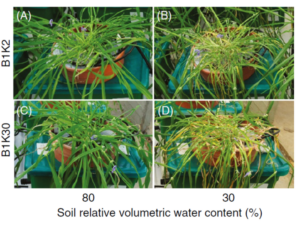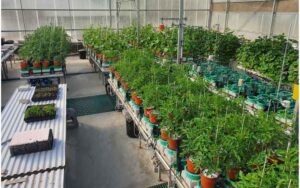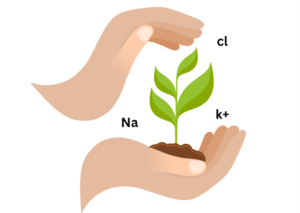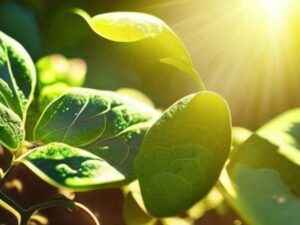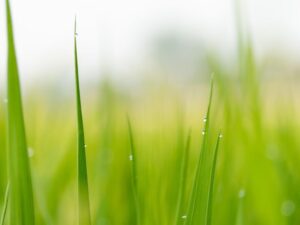Plant physiology phenotyping is a key area of study that examines a plant’s structure, function, and metabolism. It aims to identify the biological mechanisms behind plant growth, development, and their response to environmental stresses like drought and flooding.
This process uses a variety of techniques and tools, such as our fully automated PlantArray system, which includes physiological measurements and biochemical assays to characterize the complex interactions between plants and their environment. Understanding plant physiology is critical for developing more efficient and sustainable agricultural practices.
What Role Does Physiology Phenotyping Play in Agriculture?
Physiology Phenotyping helps growers understand the optimal conditions needed for plant growth by providing insights into the physiological traits of plants. This knowledge can reduce resource waste and enhance crop production efficiency, ultimately leading to higher yields and increased profitability.
Furthermore, the use of physiology phenotyping helps identify how plants respond to stressors like drought or disease, allowing for the development of strategies to mitigate their negative impacts on crop production.
What Are the Key Physiological Traits of Plants?
Plants possess a remarkable array of physiological traits that allow them to adapt and thrive. These traits are crucial for their growth and overall functionality. Understanding them is vital for optimizing crop productivity.
Here are some of the key physiological traits:
- Photosynthesis: The process by which plants convert sunlight into chemical energy. This fundamental trait captures carbon dioxide and converts it into glucose, releasing oxygen.
- Transpiration: The loss of water vapor through tiny pores called stomata. Transpiration facilitates the transport of water and nutrients, cools the plant, and maintains structural support. Excessive transpiration, however, can lead to water stress, highlighting the importance of studying plant physiology under varying conditions.
- Nutrient Acquisition: Root systems extract essential minerals like nitrogen, phosphorus, and potassium from the soil. Plants have evolved intricate mechanisms, such as mycorrhizal associations, to enhance nutrient uptake.
- Tropisms: Growth responses to external stimuli. Phototropism causes plants to grow toward light, while gravitropism ensures roots grow downwards and stems grow upwards.
- Defense Mechanisms: Plants can produce chemical compounds to deter herbivores or activate immune responses to combat pathogens. Studying plant physiology includes examining these defense mechanisms.
How is Physiology Phenotyping Used in Practice?
Physiology phenotyping is a valuable tool used in various fields. In plant biology, it evaluates plant performance using techniques like gas exchange measurements, chlorophyll fluorescence, and assessments of water use efficiency and heat stress tolerance.
A key objective in crop improvement is identifying genotypes with desirable traits, such as disease resistance or high yield. Through techniques like genetic mapping and genome sequencing, researchers can identify specific genes associated with these traits.
This information enables breeders to select and cross plants with the desired genetics, leading to new, improved crop varieties. By leveraging the power of plant physiology and genetics, crop improvement programs can enhance productivity and resilience to meet growing global demands.
What Do Phenotyping Methods Entail?
Phenotyping methods are the techniques used by researchers and breeders to quantify and evaluate a plant’s phenotype. These methods range from simple visual assessments to sophisticated technologies like the PlantArray system. Common methods include measuring plant height, leaf area, and root architecture. Advanced platforms allow for more precise and high-throughput data collection. Accurate phenotyping methods are crucial for advancing agriculture and ensuring food security in a changing world.
Trait Category | Specific Traits | Measurement Methods |
|---|---|---|
Morphological | Plant Height, Leaf Area, Stem Thickness, Root Architecture | Ruler, Digital Imaging, 3D Scanning |
Physiological | Water Use Efficiency, Transpiration Rate, Photosynthesis, Stomatal Conductance | Gravimetric Platforms (e.g., PlantArray), Gas Exchange Systems, Chlorophyll Fluorometers |
Biochemical | Chlorophyll Content, Nutrient Levels, Secondary Metabolite Production | Spectrophotometry, HPLC (High-Performance Liquid Chromatography) |
Yield & Stress Response | Biomass, Yield, Drought Tolerance, Heat Stress Response | Harvesting, Weighing, Controlled Environment Studies |
About Plant-Ditech
Plant-Ditech enhances the capabilities of scientists, breeders, and agro-researchers by providing plant phenotyping systems and software. This technology enables the quick and automatic processing of vast amounts of phenotypic data, offering deep insights into plant-environment interactions and significantly shortening research and development time. Plant-Ditech is setting new standards in plant research.
Do you have any questions about the specific physiological traits mentioned, or would you like to know more about the PlantArray system?
Frequently Asked Questions
What is a Phenotype in Agriculture?
In agriculture, a phenotype refers to the observable physical and physiological characteristics of a plant. These traits, which are a result of both genetic and environmental factors, include plant height, leaf shape, transpiration, water-use efficiency, and stomatal conductance. Understanding and manipulating phenotypes is essential for crop improvement and breeding programs.
How Does the PlantArray System Enhance Plant Research?
The PlantArray system provides rapid plant screening by precisely measuring physiological traits that correlate with yield potential. It controls and monitors experiments, uploading vast amounts of real-time data to a cloud-based application for analysis. This data, which would be impossible to process manually, helps identify key physiological factors that contribute to plant productivity and optimize plant growth and development.

